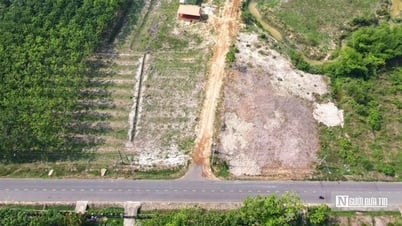Silicon Valley Bank (SVB) – one of the most famous lenders in the US tech startup world – collapsed on the morning of March 10 (local time), forcing the federal government to intervene.
SVB's collapse – which occurred in just 48 hours – was the second-largest in US banking history, and the largest since the 2008 financial crisis.
In the first few hours of trading after the market opened on March 10, the Federal Deposit Insurance Corporation (FDIC) said it had created a new bank, Santa Clara National Bank, to manage the deposits and other assets of the failed SVB.
Collapse within 48 hours
Until the morning of March 8, SVB was still a well-capitalized organization looking to raise money. Things began to deteriorate rapidly when, late on March 8, SVB Financial Group – SVB’s parent company – announced that it had sold a large amount of securities, worth $21 billion at the time of the sale, at a loss of about $1.8 billion after taxes, and would sell $2.25 billion in new shares to shore up its balance sheet.
This has caused panic among major venture capital funds, leading them to advise businesses to withdraw money from SVB.
On March 9, SVB customers attempted to withdraw $42 billion in deposits – about a quarter of the bank’s total assets.
SVB clients said CEO Greg Becker failed to inspire confidence when he urged them to “stay calm” during a video call that began on the afternoon of March 9. SVB Financial Group’s shares continued to plummet, falling as much as 60% by the close of trading on March 9, and were halted on March 10.
An employee told people that the Silicon Valley Bank (SVB) headquarters in Santa Clara, California, began closing on March 10, 2023. SVB was closed by California state regulators and placed under the control of the Federal Deposit Insurance Corporation (FDIC). Photo: Getty Images
The timing of the FDIC's mid-morning takeover of SVB was notable, as the agency typically waits until markets close before intervening.
“SVB’s situation deteriorated so rapidly that it could not have lasted another five hours,” said Dennis M. Kelleher, CEO of Better Markets. “That’s because customers were withdrawing money so quickly that the bank ran out of liquidity and a shutdown for the day was inevitable.”
US Treasury Undersecretary Wally Adeyemo on March 10 sought to reassure the public about the health of the banking system following the sudden collapse of SVB.
“Federal regulators are paying attention to this financial institution, and when it comes to the broader financial system, we have great confidence in the resilience of the system,” Adeyemo told CNN in an exclusive interview.
“We have the tools necessary to deal with incidents like what happened with SVB,” said Mr. Adeyemo.
Mr. Adeyemo also said that U.S. officials were “looking for more information” about the incident. He argued that the Dodd-Frank financial reform overhaul, signed into law in 2010, had given regulators the tools they needed to address the problem and improve banks’ capitalization.
The US official declined to predict what impact, if any, the incident would have on the broader economy or the tech industry.
Why?
SVB's bankruptcy is seen as the latest fallout from the US Federal Reserve's moves to stem rising inflation with its most aggressive interest rate hike campaign in four decades.
When interest rates were near zero, banks were buying long-term, low-risk Treasury bonds. But as the Fed raised rates to fight inflation, the value of those assets fell, leaving banks with paper losses.
That may not have been a problem, but the situation has taken a turn for the worse as more customers have come forward to withdraw their funds.
Higher interest rates have hit the tech sector particularly hard, depressing the value of tech stocks and making it harder to raise capital, said Mark Zandi, chief economist at Moody’s. That has led many tech companies — SVB’s biggest customer base — to withdraw their deposits from the bank to finance their own operations.
To meet those withdrawal demands, SVB had to sell some of its assets. That is when the “tragedy” of this bank began.
An SVB branch in Menlo Park, California, closed on March 10, 2023. The notice on the door was from the FDIC, which took control of SVB since the bank's collapse. Photo: Business Insider
“Everyone on Wall Street knows that the Fed’s rate hike campaign will eventually break something, and right now it’s hitting small banks,” said Ed Moya, a senior market analyst at Oanda.
Though little known outside Silicon Valley, SVB is among the top 20 commercial banks in the United States, with total assets of $209 billion as of the end of 2022.
Following SVB's collapse, nearly $175 billion in customer deposits were placed under regulatory control.
Santa Clara National Bank, which was created by the FDIC after SVB collapsed, will begin operations on March 13, and checks issued by the old bank will continue to be honored, the US regulator said in a statement on March 10.
According to the FDIC, customers will have full access to their insured deposits no later than the morning of March 13, but the FDIC admits it has not yet determined how many deposits are currently uninsured.
While customers with deposits up to $250,000 – the maximum insured by the FDIC – will be fully reimbursed, there is no guarantee that depositors with larger amounts in their accounts will get their money back in full.
Those customers will be issued certificates for their uninsured funds, meaning they will be among the first to be reimbursed with recovered funds while the FDIC takes over SVB's assets. However, there is still a chance they may not get all of their money back .
Minh Duc (According to CNN, NY Times, WSJ)
Source

































































































Comment (0)